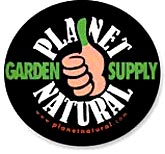The Curious Case of the Missing Information
Here’s one of the oddest, and to my mind most outrageous things I learned while working on the organic lawn article. It’s one of those things I’d heard rumored, and once I started working, it was something that turned up again and again in various documents I consulted: the claim that “inert” ingredients on a pesticide label weren’t necessarily inert.
Pick up any pesticide, and somewhere the label will say “Active ingredients” (and then the name of a chemical, and a percentage, often under 10%) and then “Inert ingredients” and a percentage. These inert ingredients are not named, but no worries; if it can’t react with other chemicals, it can’t harm us. It’s chemically inactive. That’s what inert means, right?
Wrong.
Or rather, right—everywhere except on a pesticide label. Apparently pesticides are different, and get their own definitions. An undated EPA document states that
* An active ingredient is one that prevents, destroys, repels or mitigates a pest, or is a plant regulator, defoliant, desiccant or nitrogen stabilizer. By law, the active ingredient must be identified by name on the label together with its percentage by weight.
* An inert ingredient means any substance (or group of structurally similar substances if designated by the Agency), other than an active ingredient, which is intentionally included in a pesticide product…. Pesticide products can contain more than one inert ingredient, but federal law does not require that these ingredients be identified by name or percentage on the label. Only the total percentage of inert ingredients is required to be on the pesticide product label.
In other words, “active ingredients” on a pesticide label are those that actually kill the pest. “Inert ingredients” are anything else. They may be highly volatile and cause all sorts of health problems, but they don’t have to be named or their quantities listed. Indeed, one an EPA page called The Inside Story: A Guide to Indoor Air Quality, has a section on pesticides that includes this caution:
In addition to the active ingredient, pesticides are also made up of ingredients that are used to carry the active agent. These carrier agents are called "inerts" in pesticides because they are not toxic to the targeted pest; nevertheless, some inerts are capable of causing health problems.
Recognizing that for many people “inert” was synonymous with “harmless,” in 1997 the EPA issued a Notice (Pesticide Regulation Notice 97-6, in case you were wondering) which “encourages” pesticide companies to use the term “other” instead of “inert.”
For some reason, this doesn't seem to have caught on. Gee, I wonder why?

 Subscribe to RSS feed
Subscribe to RSS feed



Read your post, read the links you provided… now we’re ticked off! Not that we use pesticides in our garden anymore other than what we can make from ingredients we grow ourselves… but what a crock it is that this intentional mislabeling can go on unchecked. Thank you for pointing it out… gggrrrr…
Hey, Shibaguyz, good to hear from you. To me this sounds like something spouted by an irrational conspiracy theorist, but it’s true. It boggles the mind.
–Kate
We’re glad you posted your references to this article. It really does sound crazy but… sometimes it sounds crazy because it is crazy…